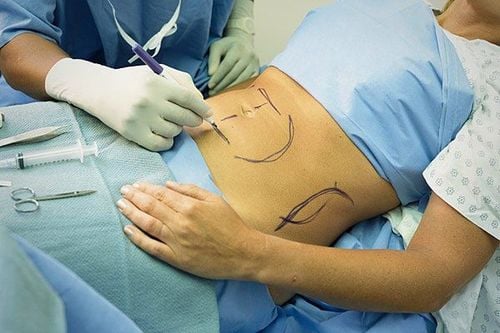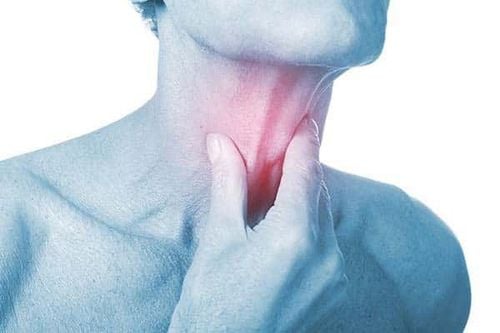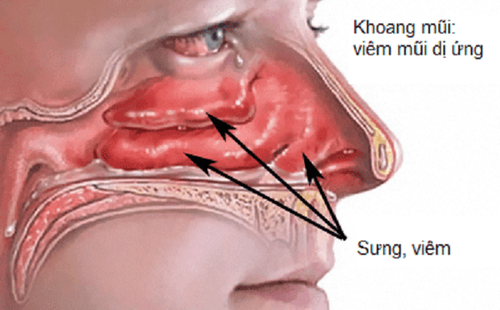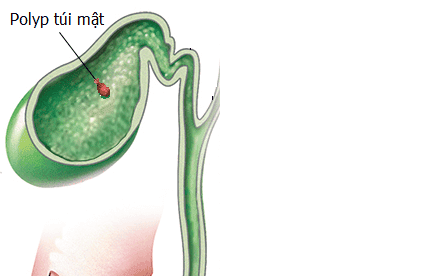This is an automatically translated article.
The article was professionally consulted by Specialist Doctor I Nguyen Duc Thong - Anesthesiologist - General Surgery Department - Vinmec Danang International Hospital. The doctor has 14 years of experience in the field of Anesthesia.Nasopharyngeal tumors are diverse, including papillomas, fibroids, hemangiomas, mixed tumors,... Benign tumors usually have little effect on the patient's health, but there are some If not detected and treated early, it can also be life-threatening. Endoscopic surgery was born, making the treatment of nasopharyngeal tumors easier.
1. Some common types of nasopharyngeal tumors
Benign nasopharynx tumors can also lead to many serious complications, causing adverse effects on quality of life if not treated early. Some types of nasopharyngeal tumor can cause adverse health effects, including:Nasal polyp: This is a benign tumor that forms from the lining of the nose. Most nasal polyps do not cause any serious health effects. However, there are also cases where it causes many dangerous complications such as acute or chronic sinusitis, difficulty breathing due to obstructive sleep, changes in eye structure causing double vision, ... Nasopharyngeal fibroids : this is a common tumor in puberty, usually in males, aged 15-25. This is a benign tumor but has the ability to spread very widely, destroy bone causing health deterioration and danger. patient's life. Nasal mucinous tumor: is a benign tumor but often causes pressure on the orbit and easily causes facial deformity.
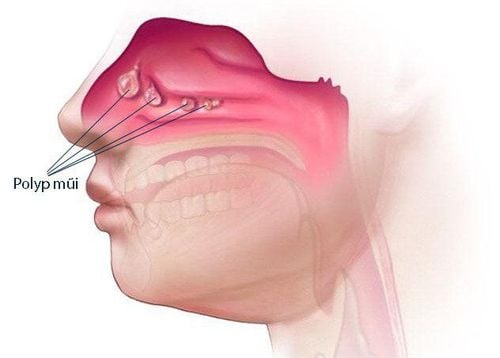
2. Endoscopic surgery to cut nasopharynx tumors
Depending on the location, size and spread of the tumor, along with the patient's health condition, the doctor will choose the appropriate treatment method. Surgery is the mainstay of treatment for most nasopharyngeal tumors. There are two main types of surgery:Open surgery: the doctor makes an entrance near the nose or in the mouth to access the tumor. Then use specialized tools to remove the tumor. Endoscopic surgery: the doctor approaches the tumor using an endoscope and uses the attached devices to remove the tumor through the natural passage of the nasal cavity. This method helps patients feel less pain, recover faster after surgery and leave no scars on the face. When detecting a nasopharyngeal tumor, if surgery is required, the sooner the better. Although the tumor may not cause any health problems at the moment, but if it is left for a long time, the larger the tumor will grow and invade the surrounding tissues, the surgery will become much more difficult. a lot of.
Indications for endoscopic resection of nasopharyngeal tumors: for non-invasive nasopharyngeal tumors.
Endoscopic resection of nasopharyngeal tumor has no absolute contraindications. Even in cases of open surgery, it is still possible to combine with laparoscopy to dissect and remove fibroids.
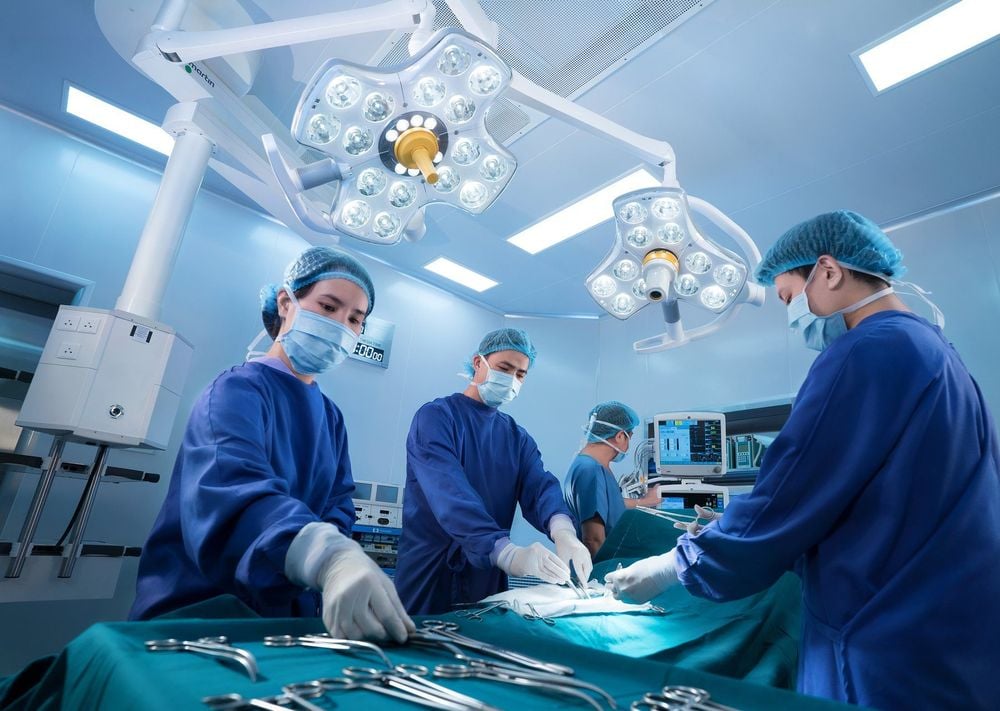
3. Anesthesia for endoscopic surgery to cut tumors in the nasopharyngeal region
Endotracheal anesthesia is a general anesthetic technique that uses an endotracheal tube to control breathing during surgery. This is the anesthetic method of choice in endoscopic resection of nasopharyngeal tumors.Endotracheal anesthesia is contraindicated in the following cases:
Patients with maxillofacial lesions complicated by trauma or infection. The surgical facility does not have enough anesthesia and resuscitation facilities. Basic steps in endotracheal anesthesia for endoscopic surgery to remove nasopharyngeal tumors include:
Checking records, examining the patient Position of the patient in supine position, breathing 100% oxygen at a rate of 3 - 6l /min at least 5 minutes before induction of anesthesia. Install the monitor, set up the transmission line. Pre-anesthesia if necessary. Induction of anesthesia: Sleeping pills: intravenous anesthetics, volatile anesthetics. Painkillers Muscle relaxants The condition for intubation is that the patient sleeps deeply and has enough muscle relaxation. Some complications may be encountered during endotracheal anesthesia in endoscopic surgery to remove nasopharyngeal tumors, including:
Reflux of gastric juice into the airways Hemodynamic disorders: hypotension or hypertension, arrhythmia (tachycardia, bradycardia, arrhythmia). Accidents caused by intubation: Unable to insert endotracheal tube Vocal-tracheal-bronchospasm Trauma during intubation: bleeding, tooth fracture, vocal cord injury, foreign body falling into the airway, ... Respiratory complications: folding, slipping of the endotracheal tube, opening the respiratory system, running out of oxygen, lack of oxygen,... Complications after extubation such as respiratory failure, pain throat, hoarseness, spasms of the vocal cords - gas - bronchi, inflammation of the upper respiratory tract, ... Depending on the complications, the doctor will have appropriate treatment methods to overcome those complications.
The package of screening, and early detection of oropharyngeal, pharyngeal, and laryngeal cancers at Vinmec International General Hospital includes:
Full range of necessary services to help early detection of oropharyngeal cancer Detect any abnormalities often different in the arch - hypopharynx - larynx area Advantages when choosing a screening package and early detection of cancers of the nasopharynx, pharynx and larynx at Vinmec International General Hospital.
Being examined by a team of highly qualified and experienced doctors. At Vinmec International General Hospital, it combines comprehensive patient care and treatment with multi-specialty coordination towards individualizing each patient. There is a full range of specialized facilities to diagnose the disease and stage it before treatment: Endoscopy, CT scan, PET-CT scan, MRI, histopathological diagnosis, gene-cell testing, .. There are full range of mainstream cancer treatment methods: surgery, radiation therapy, chemotherapy, stem cell transplant...
Please dial HOTLINE for more information or register for an appointment HERE. Download MyVinmec app to make appointments faster and to manage your bookings easily.






